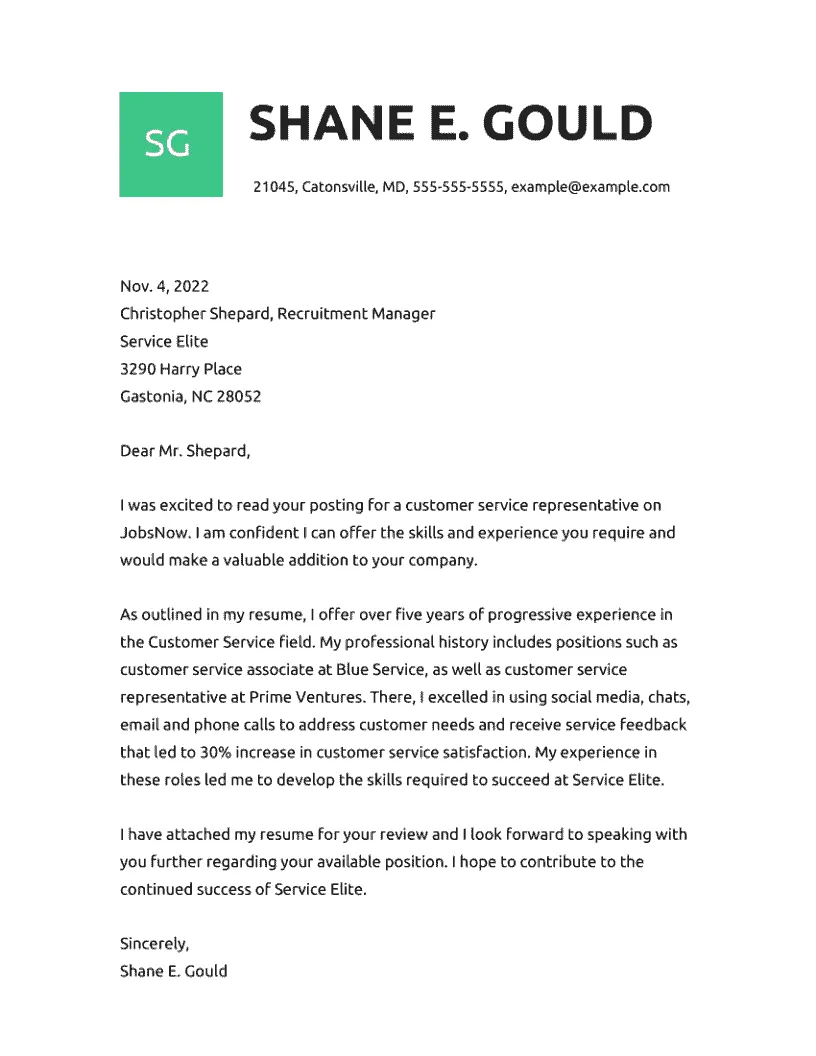Key Elements of a Customer Service Cover Letter
A customer service representative cover letter is your first opportunity to make a positive impression on a potential employer. It’s more than just a formality; it’s a chance to showcase your personality, skills, and enthusiasm for the role. A well-crafted cover letter complements your resume, providing context and depth to your qualifications. It allows you to highlight specific experiences and achievements that align with the job requirements, setting you apart from other applicants. This guide will walk you through the essential components of a compelling customer service cover letter, ensuring you make a strong case for your candidacy and increase your chances of landing an interview. The key is to create a personalized document that resonates with the hiring manager and demonstrates your understanding of the company’s needs. Remember, every detail matters, from the formatting to the tone, so attention to detail is essential.
Contact Information Crafting Your Header
The header of your cover letter is the first element a hiring manager will see. It’s crucial to present a professional and organized appearance. The header should include your contact information, the date, and the recipient’s details. Accuracy and clarity are paramount; ensure that all information is easily accessible and correct, as errors here can immediately disqualify your application. This initial section sets the tone for the entire letter, so a polished and professional header immediately signals that you are a detail-oriented and organized individual. Proper formatting shows respect for the hiring manager’s time and attention, and demonstrates your preparedness to handle the demands of a customer service role.
Your Name and Contact Details
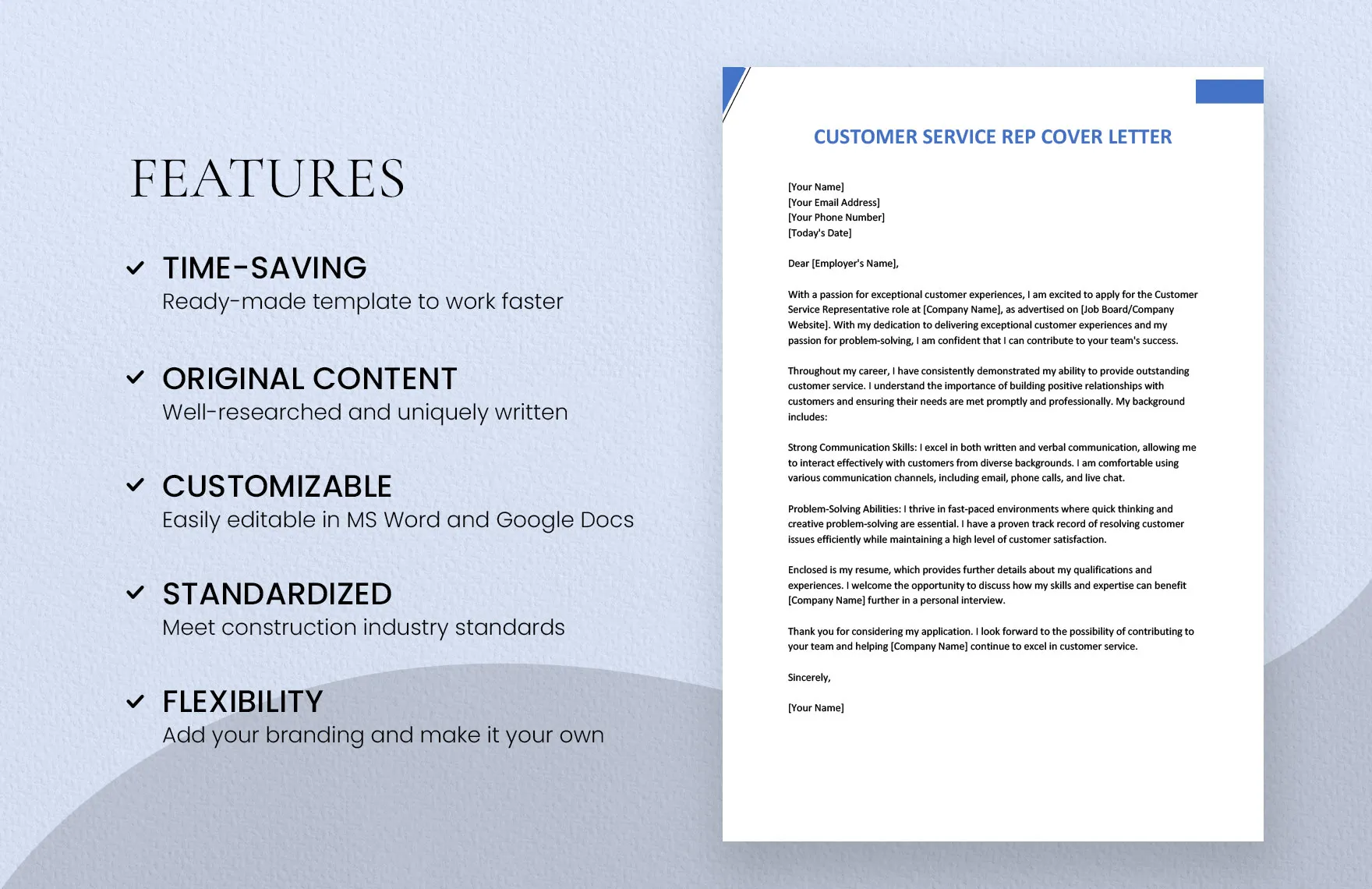
Begin by including your full name at the top. Below your name, clearly list your phone number, email address, and optionally, your LinkedIn profile URL or a link to your online portfolio if applicable. Use a professional email address; avoid using nicknames or informal addresses. Ensure your phone number is accurate and that your voicemail is set up with a professional greeting. Make sure that your LinkedIn profile is up to date and showcases your customer service experience and skills. This is the initial step in ensuring the hiring manager can easily reach you and is a straightforward way of demonstrating your professionalism and preparedness for a customer-facing role.
Date and Recipient’s Information
Below your contact information, include the date you are sending the letter. Then, on the left side, provide the hiring manager’s name (if known), their title, the company name, and the company’s address. If you’re unsure of the hiring manager’s name, research on LinkedIn or the company’s website to personalize your letter. Addressing the letter to a specific person significantly increases the likelihood of it being noticed. Accurate recipient details showcase your attention to detail and your genuine interest in the opportunity, signaling that you have invested time and effort in your application. This personalized touch goes a long way in making a favorable first impression.
The Salutation Addressing the Hiring Manager
The salutation is the formal greeting that starts your cover letter. It is your first chance to address the hiring manager directly and set the tone of your communication. Choosing the right salutation reflects your professionalism and attention to detail. The greeting should be concise, respectful, and appropriate for the context of your application. If the hiring manager’s name is unknown, you may need to use a general greeting, although personalizing it is always preferable when possible. Consider the company culture; some might prefer a more casual approach, but it’s best to start with formality until you know otherwise.
Finding the Right Contact
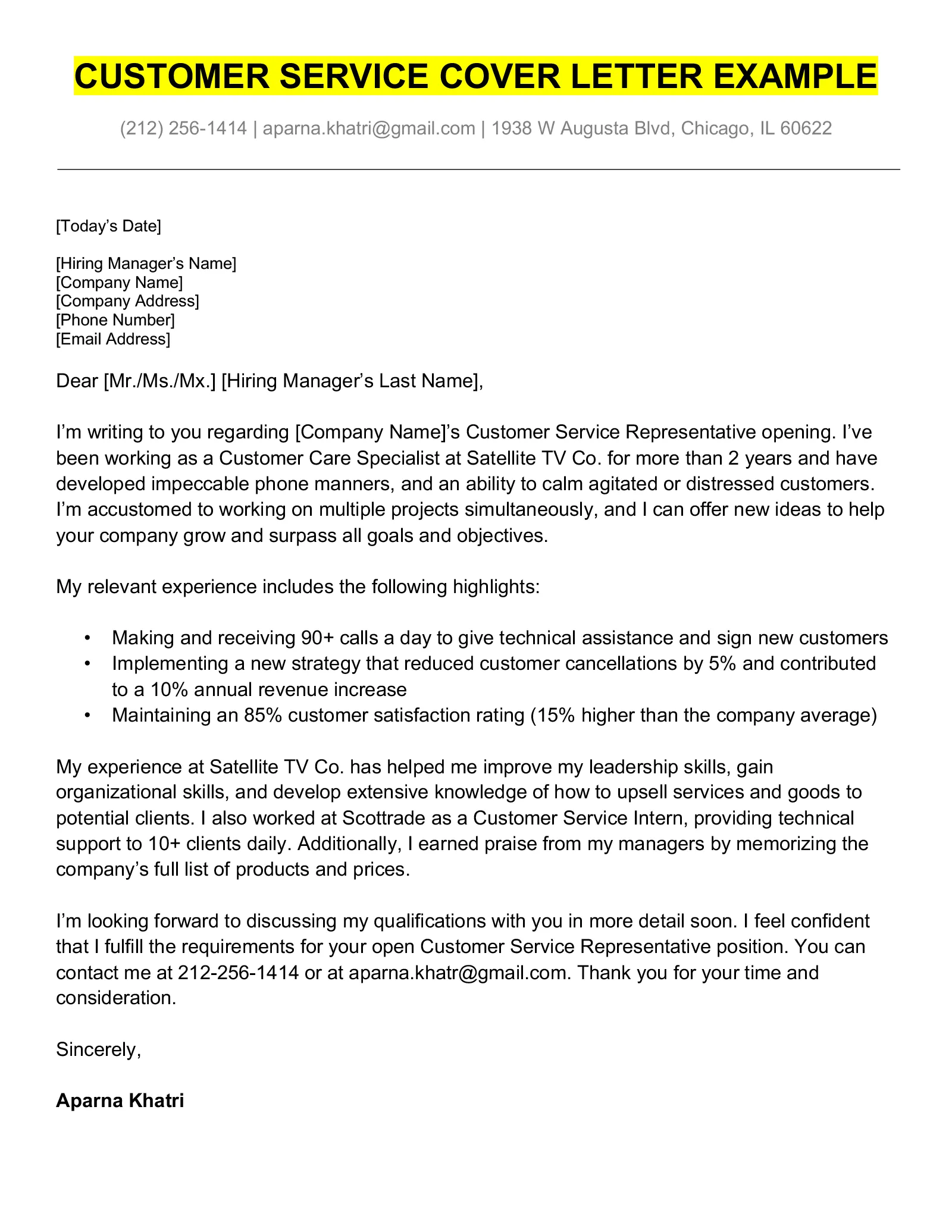
Whenever possible, address your cover letter to a specific person. Research the hiring manager’s name on LinkedIn, the company website, or by contacting the company’s HR department. Addressing the letter to the hiring manager shows that you have taken the time to learn more about the company and personalize your application. This small effort can make a significant difference in how your application is received. If you can’t find a specific name, use a title such as ‘Hiring Manager’ or ‘Recruiting Team.’ Personalization demonstrates that you are genuinely interested in the position and makes your cover letter feel less generic.
Avoiding Generic Greetings
Avoid generic greetings like ‘To Whom It May Concern.’ This phrase is outdated and impersonal. Instead, opt for a more direct approach, such as ‘Dear Mr./Ms. [Last Name]’ if you know the hiring manager’s name. If the name is unavailable, consider options like ‘Dear Hiring Manager’ or ‘Dear [Department Name] Team.’ These alternatives maintain a professional tone while showing respect. Researching the company’s culture can guide you; some companies might use ‘Hello’ or ‘Greetings,’ but always maintain a respectful tone to avoid any misunderstandings. The right greeting sets the stage for the rest of your letter.
The Opening Paragraph Making a Strong First Impression
The opening paragraph is your chance to grab the hiring manager’s attention and make a positive first impression. It should be concise, engaging, and clearly state the position you’re applying for. The opening paragraph is the introduction to your application and sets the tone for the rest of your letter. It should convey your enthusiasm for the role and the company, as well as summarize your value proposition, creating an immediate hook that encourages the reader to continue. A strong opening paragraph demonstrates your writing skills and your ability to present yourself as a compelling candidate for the position.
Expressing Enthusiasm and Purpose
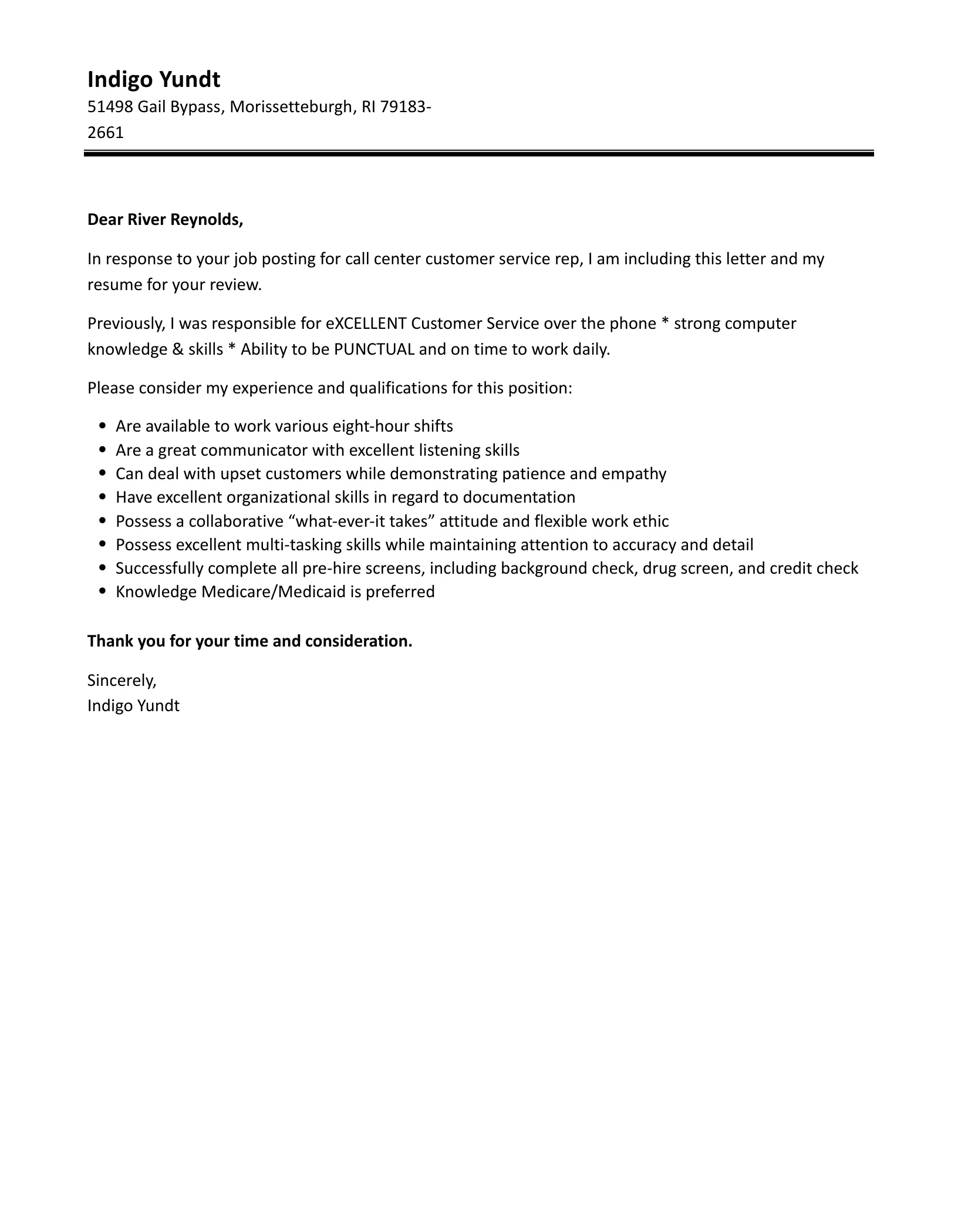
Start by expressing your genuine enthusiasm for the position and the company. Mention the specific customer service role and how you learned about it. Clearly state your intention to apply and briefly highlight what attracted you to the role or company. Being specific, mentioning any specific aspects of the role that interest you, or referencing your knowledge of the company’s mission, demonstrates your genuine interest. Avoid generic statements and instead personalize your introduction to make it more impactful and memorable. Your opening should demonstrate that you have taken the time to research the company and are truly excited about the opportunity.
Highlighting Your Value Proposition
Immediately follow with a brief statement of what you bring to the table. Summarize your most relevant skills or experiences in a concise and compelling manner. Mention one or two key achievements or qualifications that align with the job description. Show the hiring manager why you are the ideal candidate by providing a quick overview of how you can meet their needs. Focus on what you can do for the company, not just what you’re looking for. Make sure this opening paragraph immediately establishes your value proposition and gives the hiring manager a clear reason to read further. The goal is to capture their attention from the outset and make them want to learn more about you.
Showcasing Your Relevant Skills
The main body of your cover letter is where you elaborate on your skills and experiences, demonstrating how they align with the job requirements. This section allows you to provide specific examples and context that bring your resume to life. By focusing on the key skills and qualities the employer is looking for, you can show why you are the best fit for the role. This part is an opportunity to showcase your personality and communication style, enhancing your appeal to the hiring manager. Remember to support your claims with concrete examples and quantifiable results to increase the letter’s impact. This is where you make a lasting impression, illustrating your value and potential to the employer.
Communication Skills Verbal and Written
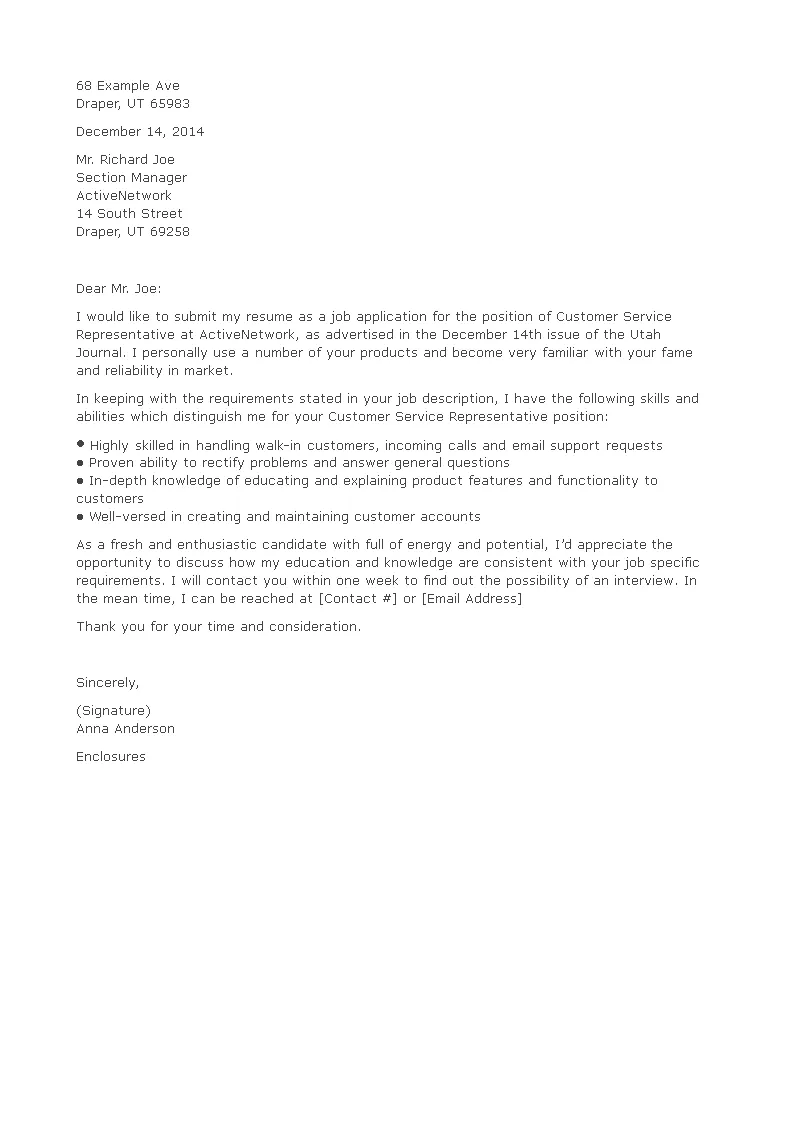
Customer service roles demand excellent communication skills. Highlight your ability to communicate clearly and effectively, both verbally and in writing. Provide examples of situations where you successfully conveyed information to customers, resolved their concerns, or explained complex topics in a simple manner. Mention any training or certifications related to communication or active listening. Tailor your language to match the tone of the company and demonstrate your ability to adapt your communication style to different audiences. Demonstrating strong communication skills is essential for building rapport with customers, understanding their needs, and providing efficient support. This is essential for all customer-facing roles.
Problem-Solving Abilities
Customer service frequently involves solving problems. Showcase your problem-solving abilities by providing examples of how you’ve identified issues, analyzed them, and implemented effective solutions. Describe instances where you went above and beyond to resolve a customer’s issue, especially if it led to a positive outcome. Quantify your results whenever possible. For instance, mention how you reduced resolution times or improved customer satisfaction scores. Be specific and provide context. Show that you are proactive, resourceful, and able to handle difficult situations with professionalism and efficiency. Highlight your ability to think critically under pressure and provide practical solutions.
Empathy and Patience
Empathy and patience are crucial in customer service. Give examples of your ability to understand and address customer concerns with sensitivity and composure. Show how you actively listened to customers, acknowledged their feelings, and provided solutions. Demonstrate your patience by highlighting instances where you successfully managed difficult customers or challenging situations. Illustrate your emotional intelligence by showing how you maintained a positive attitude even under pressure. Providing concrete examples of how you have demonstrated empathy and patience will highlight your suitability for customer service roles and demonstrate your dedication to customer satisfaction. This is vital for creating positive customer interactions.
Experience and Achievements
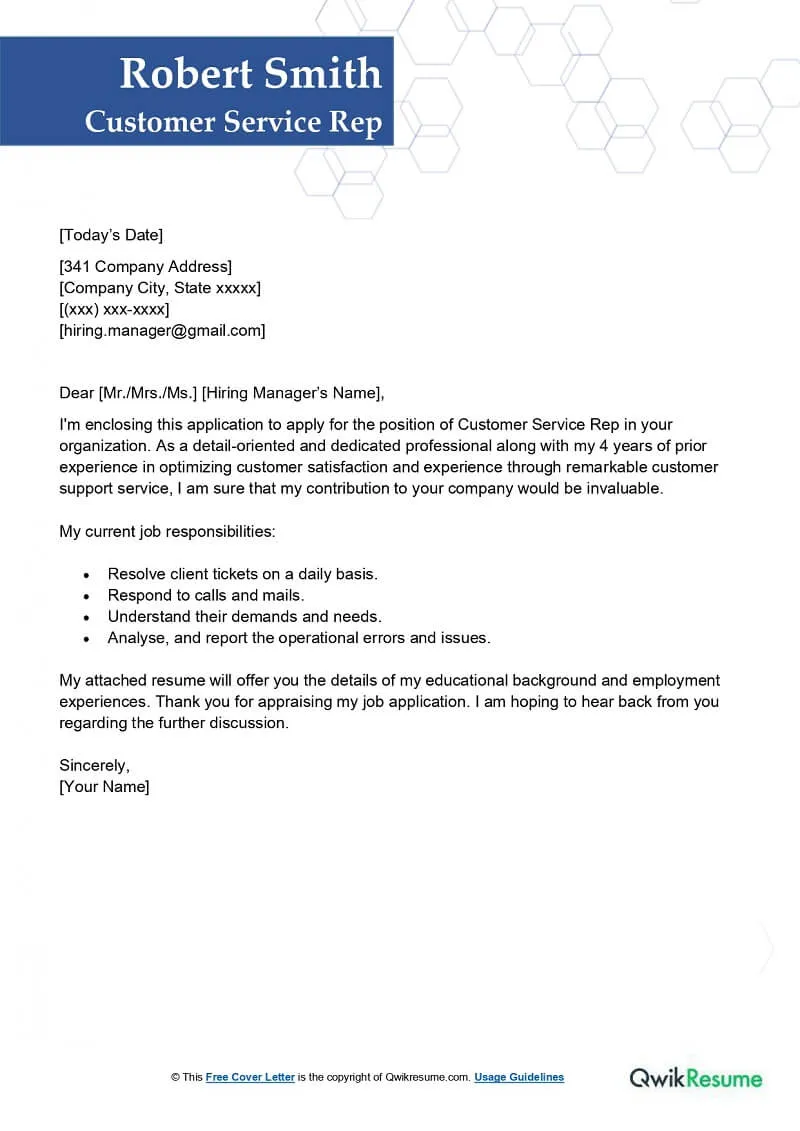
In this section, you’ll expand on your relevant experience and quantifiable achievements. This is your chance to provide context to your resume and demonstrate the value you brought to past roles. Provide specific examples of your accomplishments, focusing on results and how you contributed to improving customer service or other related metrics. Quantify your achievements with data and metrics to show the tangible impact of your efforts. The objective is to give the hiring manager concrete evidence of your capabilities and what you can offer the company, making a strong case for why you’re the best candidate for the job. This provides clear evidence of your success.
Quantifying Your Accomplishments
Use data and metrics to quantify your accomplishments. Instead of simply stating that you improved customer satisfaction, specify by how much (e.g., ‘Increased customer satisfaction scores by 15%’). If you reduced response times, state the percentage or the specific time reduction. Quantifiable results are far more persuasive than vague statements. Include specific numbers, percentages, or other measurable outcomes to showcase the impact of your work. Quantifying your accomplishments provides tangible evidence of your skills and abilities, which reinforces your claims and demonstrates your value to potential employers. Clear, concise metrics make your achievements more impactful and easier to understand.
Tailoring to the Job Description
Carefully review the job description and tailor your examples and skills to match the specific requirements listed. Highlight the keywords and phrases used in the job posting, integrating them naturally into your cover letter. Focus on how your skills and experiences align with the employer’s needs. For example, if the job description mentions ‘handling customer complaints,’ provide an example of how you resolved customer issues in a previous role. Tailoring your cover letter to the job description demonstrates that you’ve taken the time to understand the role and that you’re a good fit for the position. The more closely your letter aligns with the requirements, the better your chances of being selected for an interview.
The Closing A Call to Action
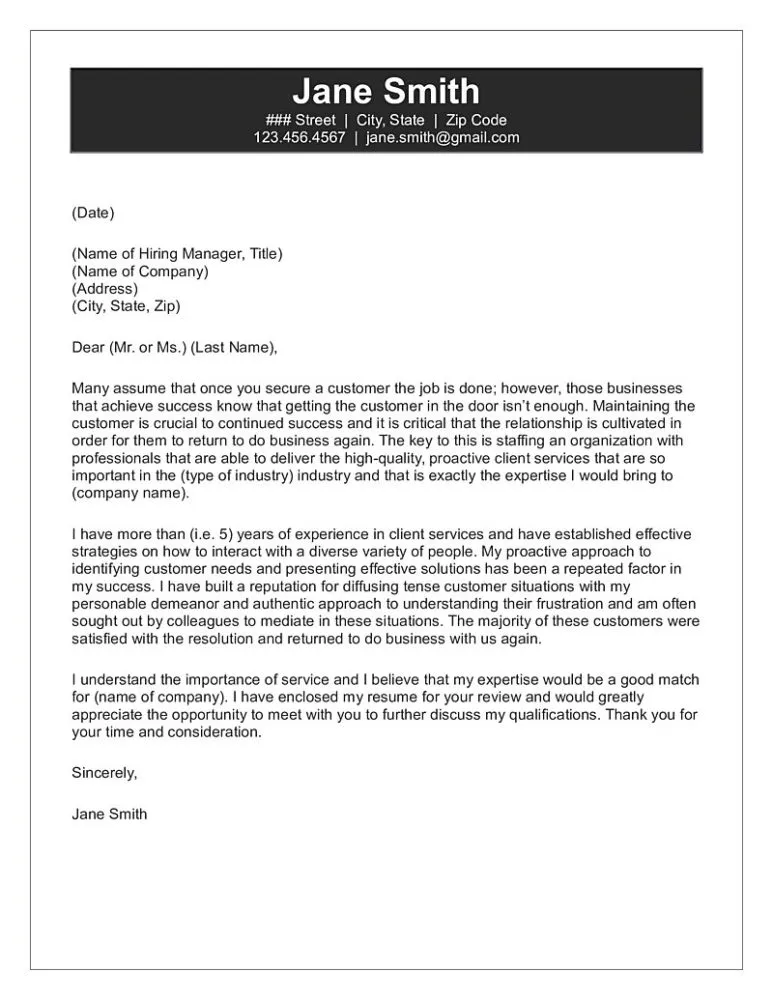
The closing paragraph should summarize your interest, express your gratitude, and include a clear call to action. This is your last opportunity to leave a positive impression. Make it concise, enthusiastic, and professional. It should recap why you are a strong candidate and encourage the hiring manager to take the next step. It is your chance to reiterate your enthusiasm and invite the hiring manager to consider your application further. This final touch should be a clear and actionable statement.
Expressing Gratitude and Anticipation
Thank the hiring manager for their time and consideration. Reiterate your enthusiasm for the position and the company. Express your interest in discussing your qualifications further in an interview. Show your appreciation for the opportunity. Avoid overly casual language. Keep it professional, sincere, and focused on the value you bring to the table. A well-crafted closing demonstrates your professionalism and courtesy, leaving a lasting positive impression. Always show gratitude to the hiring manager for their time and for considering your application.
Including a Professional Closing and Signature
End with a professional closing, such as ‘Sincerely,’ ‘Best regards,’ or ‘Yours sincerely.’ Use the same closing consistently throughout your application materials. Below the closing, leave space for your handwritten signature if you’re printing the letter, and then type your full name. Ensure your signature is clear and easy to read. This final touch reinforces your professionalism and attention to detail, completing your cover letter on a positive note. Make sure that your email signature includes your contact information. The closing and signature are a crucial element of your letter’s professionalism.
